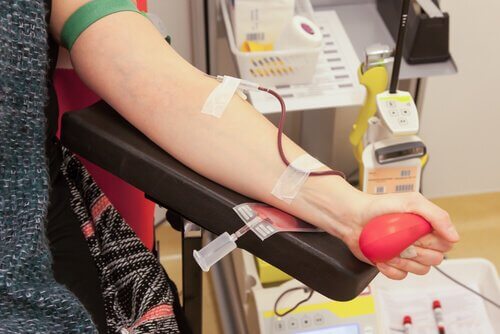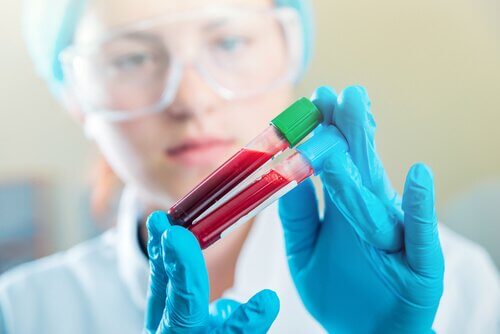The Myths and Truth about Blood Donation

We know that blood donation can save lives. However, there are still many myths surrounding the practice.
In this article, we’ll share some myths and truths about blood donation. This way, each person can have the necessary information to decide whether it’s right for them.
How is a blood donation made?

- Plasma: 24 hours for recovery.
- Red blood cells: 3 to 5 weeks for recovery.
- Iron: 8 weeks for recovery.
Read also: 5 Ways to Increase Iron Levels in Your Blood
The Myths and Truth about Blood Donation
Next, we’ll take a look at some common ideas about donating blood and let you know whether or not they’re fact or fiction.
1. There are people who should not donate blood.
Truth.

- People under 18 years of age or over 65 years of age.
- People weighing less than 50 kilos (120 pounds).
- Those who have donated blood in the last 4 months.
- Patients with insulin-dependent diabetes.
- Those who suffer from infectious diseases such as AIDS, hepatitis B or C, or Chagas disease.
- Chronic patients with kidney, lung, or heart, as well as with arterial hypertension.
- People under treatment for epilepsy.
- People who use drugs.
2. The donor can contract diseases.
Myth.

- Bruising: Hematoma is one of the most frequent adverse reactions after blood donation. It is the consequence of the rupture of blood vessels and is associated with poor puncture or a lack of pressure on the site of a puncture.
- Vasovagal syncope: This refers to fainting that happens when less blood reaches the brain. This happens because the heart rate slows down and the blood vessels dilate.
To prevent fainting, you should not donate blood while fasting. In addition, at the end of the extraction, you should get up little by little and begin to drink immediately.
3. The transfusion is 100% safe for the recipient.
Myth.

- The initial period in which the infection does not show results in the analysis, since antibodies have not been created.
- When the donor is a chronic carrier of a communicable infection, but has no symptoms and the results are negative.
- Infections due to new strains or mutations of existing ones. It is impossible to perform tests for all infectious agents.
- Laboratory errors.
Visit this article: Plants and Foods That Prevent Blood Clotting
4. We have the freedom to decide.
True.

This text is provided for informational purposes only and does not replace consultation with a professional. If in doubt, consult your specialist.








